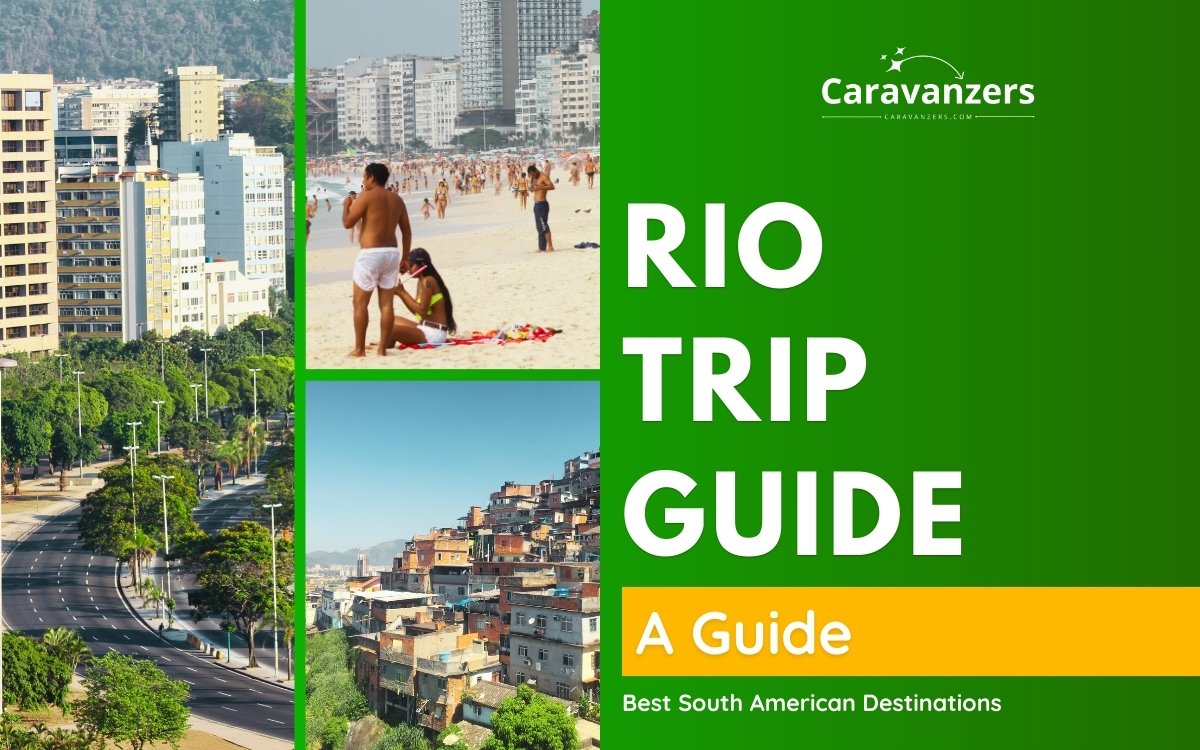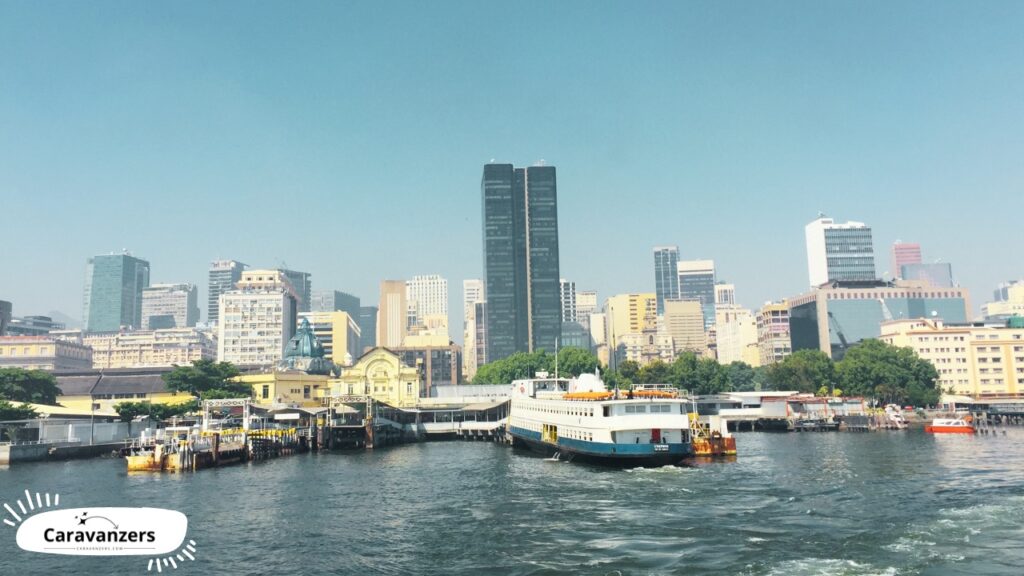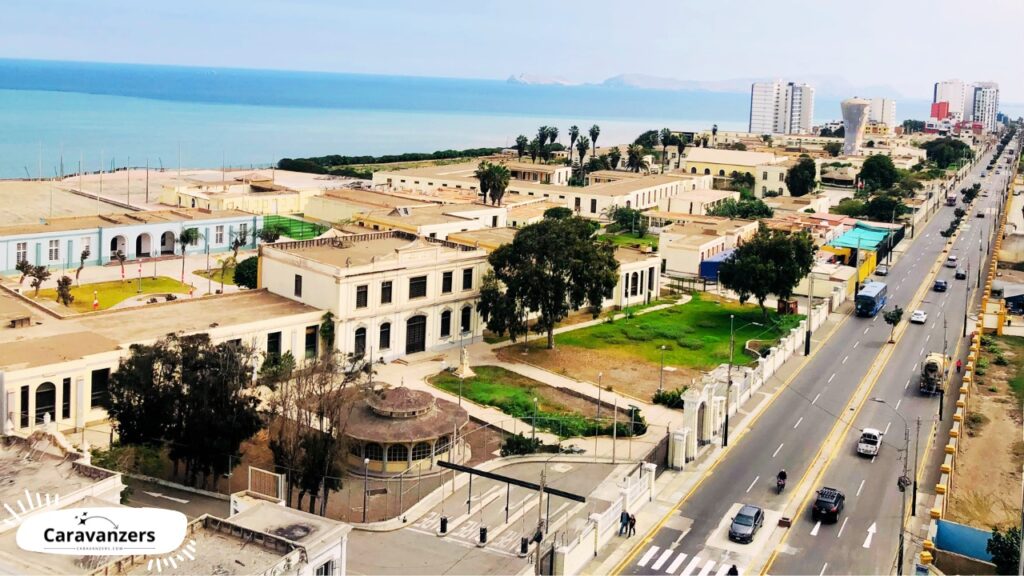
Rio de Janeiro travel guide. Let’s travel to this Brazilian city that has incredible landmarks, beautiful beaches, and more.
Brazil is one of the most popular destinations in South America, and Rio is the heartbeat of its travel industry.
In this guide, I cover essentials from where to stay to must-visit attractions, giving you an extensive overview of planning your trip.
Also, I share insights into local cuisine, safety tips, and day trip options, as well as an itinerary to mimic for your own.
So, whether you seek beach, culture, or adventure, I share with you the necessary information to make the most of your visit.
Rio de Janeiro Tourism

Your Rio de Janeiro travel will expose you to a lively energy, where you will encounter an interesting culture.
For instance, you will feel the rhythm of samba pulsating through the streets, especially during the world-famous Carnival.
Likewise, as you ascend Sugarloaf Mountain, breathtaking panoramas of the city, beaches, and Christ the Redeemer statue will unfold before you.
Similarly, exciting neighborhoods like Copacabana and Ipanema have beaches that invite you to soak up the sun and local zest for life.
Meanwhile, you will get to wander through the historic streets of Santa Teresa, where the eclectic artistic life creates a bohemian atmosphere.
Of course, you will be able to indulge in Brazilian cuisine, which has influences from Africa, Europe, and more.
Also, you will get to engage with the welcoming locals, the “Cariocas,” whether in a lively street market or a spontaneous dance party.
Finally, a Rio de Janeiro travel also means a chance to embrace the contrasts, from the lively urban scene to the tranquility of the Tijuca National Park.
Before Going
Before heading to your Rio de Janeiro travel, make sure to use your trip-planning items like essentials.
And that is because there are a few things to keep in mind.
First of all, make sure your passport is valid for at least six months beyond your intended departure date.
As a tourist, a visa is typically not required for stays up to 90 days for Western travelers.
If you aren’t from the United States, European Union, United Kingdom, Canada, or Australia, check with the Brazilian embassy.
Meanwhile, the city’s main airport is Galeão International Airport (GIG), hauling nonstop flights from all over the world.
The Brazilian Real (BRL) is the official currency, and the exchange rate fluctuates but is currently approximately 5 BRL to 1 USD.
Of course, taxis are readily available at the airports, but I would say make sure they use a meter.
Your 20-minute taxi ride from the airport to Ipanema should not cost more than 100 BRL or 20 USD.
Plus, you can consider ridesharing services like Uber for potentially more affordable options.
I cannot stress enough the importance of a travel insurance, so make sure to get one.
Finally, Brazilians do not study English the way citizens in other popular countries study it for tourism.
So, make sure to learn basic phrases in Brazilian Portuguese before coming.
Here are some…
Basic Brazilian Portuguese Phrases

Brazilians are friendly people, and the Cariocas are known across the country as being the most friendly.
As you go about your Rio de Janeiro travel, you can make use of some of these Carioca-accent phrases.
Olá (Hi): Pronounced as “oh-la.” A common and friendly greeting.
Por favor (Please): Pronounced as “poqh faqh-voqh.” Used when making a request or seeking assistance.
Obrigado (Thank you – for males) / Obrigada (Thank you – for females): Pronounced as “oh-bree-gah-doo” (for males) / “oh-bree-gah-dah” (for females). Expresses gratitude.
Desculpe (Excuse me / I’m sorry): Pronounced as “dehsh-kool-peh.” Used to apologize or get someone’s attention.
Sim (Yes) / Não (No): Pronounced as “seem” (Yes) / “naw” (No). Basic affirmatives and negatives for clear communication.
Eu sou dos Estados Unidos (I’m from the United States): Pronounced as “eh-oo soh dohs each-Utah-does oo-nee-doses.”
Onde fica o hotel? (Where is the hotel?): Pronounced as “OHCHN-dee FEE-kah oh oh-TEL?”
Estou perdido (I’m lost – for males) / Estou perdida (I’m lost – for females): Pronounced as “ehsh-TOH peqh-DEE-doo” (for males) / “ehsh-TOH peqh-DEE-dah” (for females).
Me ajude a chamar a polícia (Help me to call the police): Pronounced as “meh ah-JOO-de ah sha-MAQH ah po-LEE-see-ah.”
That should do it.
Best Time to Visit
Honestly, this really all depends on you since your Rio de Janeiro travel experiences are awesome throughout the year.
That said, the best time to visit is generally during the summer, from December to March.
Keep in mind this country is in the Southern Hemisphere.
Basically, the weather is warm, and the city is alive with festivities during summer.
Likewise, the temperatures range from 77 to 104 degrees Fahrenheit (25 to 40 degrees Celsius).
This period also aligns with major events like New Year’s Eve celebrations and the colorful Carnival in February.
If you’re planning around American school breaks, visiting during Spring Break or Summer (June to August) could be great weather, too.
Christmas break (late December) is also an option, coinciding with the Brazilian summer. You just have to remember there won’t be any snow.
Meanwhile, keep in mind that popular times like Carnival and New Year’s Eve attract large crowds, so plan accordingly.
For instance, the Carnival period means accommodations as much as fifty times more than normal.
I know; it’s insane.
But despite the potential for crowds, the festive atmosphere during these events can make your visit even more memorable.
No matter what you do, though, you really do need to plan ahead with at least six months prior to your trip.
Where to Stay in Rio

Rio has beautiful neighborhoods. For shorter visits in less than a month, consider staying in tourist-friendly neighborhoods like Copacabana and Ipanema.
These areas have popular beaches, a variety of restaurants and shops, and easy access to popular attractions like Christ the Redeemer.
Ipanema has some beautiful hotels, as does Copacabana, including luxury ones like the one in the photo above.
Nearly Lapa is also popular for its lively nightlife, making it a great choice for those who enjoy entertainment after dark.
If you’re planning a longer stay of more than a month, neighborhoods like Botafogo and Flamengo give you a more residential feel.
However, both of these neighborhoods will still give you amenities and good transportation links.
Meanwhile, Santa Teresa is super popular for its bohemian atmosphere and historic charm.
Plus, this neighborhood is also a unique option for an extended visit. It has a “local” feel, for sure.
Of course, upscale Leblon can be ideal for a longer stay since it has a quieter atmosphere compared to its bustling neighbor, Ipanema.
Finally, something many travelers don’t consider is islands. For instance, Jardim Carioca is on the Ilha do Governador (Governor’s Island), an island in Guanabara Bay.
Other islands to think about would include Ilha Grande for pristine beaches or Paquetá for a car-free retreat.
I would say consider your preferences and priorities, such as proximity to attractions, local culture, and your preferred pace of living.
What to Eat in Rio
One of the best things about your Rio de Janeiro travel experience is the food. This city has a diverse and flavorful culinary scene.
Brazilian cuisine has bold and varied flavors. Feijoada, a hearty black bean stew with meat, is a national dish worth trying.
Churrasco, or grilled meat, is a carnivore’s delight, with restaurants offering a selection of meats cooked to perfection.
Local street food is a must-try, with yummy items like pastels (fried pastries filled with various ingredients) being perfect on-the-go options.
Coxinha, my favorite, is a deep-fried dough filled with shredded chicken.
Of course, seafood lovers should indulge in moqueca, a Brazilian fish stew rich in coconut milk and spices.
Finish your meal with a serving of açaí, a refreshing and antioxidant-rich berry often served as a smoothie or bowl.
Honestly, it can feel like you just had an ice cream, minus the guilt!
Meanwhile, you will also find a variety of international cuisines because of the city’s multicultural influences.
Italian, Japanese, and Middle Eastern restaurants are among the many options available.
Plus, the city is home to Michelin-starred mainstream eateries that serve up fresh, modern takes on the old and new.
So, yeah, you will eat up, for sure!
Rio de Janeiro Attractions

From natural wonders to man-made icons, your Rio de Janeiro travel will expose you to a ton of things to see and do.
Start with the iconic Christ the Redeemer statue atop Corcovado Mountain. This is a must-visit World Wonder, offering panoramic views of the city.
Sugarloaf Mountain, accessible by cable car, is another breathtaking vantage point, especially at sunrise or sunset.
Of course, the famous Copacabana and Ipanema are not just for sunbathing but also for immersing yourself in the city’s lively beach culture.
Stroll along the mosaic-tiled Copacabana boardwalk or watch a sunset at Arpoador, a rocky outcrop between Ipanema and Copacabana.
Exploring the historic neighborhood of Santa Teresa with its charming streets and cultural spots is a delightful experience.
Visit cultural spots like the Parque das Ruinas and indulge in the bohemian ambiance.
Also, don’t miss the colorful street art scene in Lapa. Visit the iconic Selarón Steps, adorned with colorful tiles, and embrace the artistic local energy.
For nature enthusiasts, Tijuca National Park has rainforests, hiking trails, and the picturesque Pico da Tijuca, the highest peak in Rio de Janeiro.
If you can, make time for some salsa bars to witness the rhythmic movements of the Cariocas well into the night.
Favelas have somewhat become tourist destinations, but these shanty towns aren’t places to venture on your own.
Go with a reputable tour company to visit popular ones like Rocinha, Cantagalo, and Santa Marta.
Finally, do like the locals do and head to the beaches at sunset to people-watch on the weekends.
Day Trips from Rio de Janeiro
So, your Rio de Janeiro travel experiences include various intriguing day trip options for those looking to explore beyond the city limits.
First of all, make sure to listen to some beautiful music on your trip.
Now, one popular excursion is a visit to Petropolis, famous for its Imperial Museum and the summer palace of Brazil’s last emperor.
The charming town in the mountains is definitely a refreshing escape.
Another option is a trip to Niteroi, which is also accessible by ferry, where you can visit the contemporary art museum, MAC Niteroi.
Niteroi is also famous for its distinctive architecture and stunning views of Rio.
For nature enthusiasts, a day trip to Ilha Grande, a tropical paradise with beautiful beaches and hiking trails, is a great choice.
Angra dos Reis, a coastal town, serves as a gateway to boat tours exploring the scenic islands in the region.
Meanwhile, explore the historic town of Paraty, famous for its well-preserved colonial architecture and cobblestone streets.
Parity gives you a glimpse into Brazil’s colonial past and is surrounded by gorgeous landscapes.
Finally, I recommend going for a drive on the coasts since they are really beautiful. For instance, a drive to Arraial do Cabo with its gorgeous white-sand beaches.
So, yeah, these day trips will definitely enhance your overall trip to this beautiful region.
7-Day Rio de Janeiro Itinerary

If you only have a week to spare in Rio de Janeiro, this is how to spend it to get the best for your time.
Start your trip with a visit to the iconic Christ the Redeemer to marvel at the panoramic views of the city and surrounding coastline.
On day two, soak up the sun at Copacabana Beach, experiencing the lively atmosphere and beach culture.
Stroll along the famous Copacabana boardwalk, savoring local snacks and taking in the mosaic-tiled sidewalks.
Day three can be about the historic neighborhood of Santa Teresa. Wander through its charming streets, adorned with colonial houses and vibrant street art.
For day four, venture to Tijuca National Park for a nature-filled experience. Hike through its rainforests, discovering hidden waterfalls and enjoying the serenity of nature.
On the fifth day, explore the vibrant neighborhood of Lapa, famous for its historic arches and lively nightlife.
Day six takes you to savor Brazilian cuisine at local restaurants. For instance, try churrascaria for dinner, indulging in grilled meats.
Conclude your week with a day trip to Petropolis on day seven. Explore the Imperial Museum and the Summer Palace, gaining insights into Brazil’s imperial history.
If you can get those things worked into your week, your trip will definitely be memorable.
What to Avoid
While Rio de Janeiro is an incredible destination, I would say it is also essential to be aware of some precautions.
First of all, avoid showing valuables, especially in areas like Copacabana and Ipanema, to minimize theft risks.
Likewise, exercise caution at night, particularly in neighborhoods like Lapa.
Stick to well-traveled routes and reliable transportation, such as the metro or reputable taxis.
Opt for secure ATMs in bustling areas like Centro and stay vigilant at crowded events like Carnival to thwart pickpocketing.
In nightlife districts like Leblon, be cautious with drinks and keep your belongings secure.
I also think you should definitely research safety in specific areas and stay updated by following the city’s official accounts on social media.
In the past decade, Rio has become so much safer, thanks to global events like the Olympics and World Cup.
That said, though, you do have to keep in mind that there are still favelas.
So, for safety purposes, stick to tourist things, places, and companies.
Destinations from Brazil

Once you’ve explored Rio de Janeiro, you may want to consider visiting other destinations in South America.
Buenos Aires is a popular choice, famous for its colorful culture, tango music, and eclectic neighborhoods.
The short flight from Rio de Janeiro makes it an accessible option.
For a nature-centric experience, head to Patagonia in Chile or Argentina, where you will see beautiful landscapes, glaciers, and unique wildlife.
Torres del Paine National Park in Chile is particularly renowned for its breathtaking scenery.
Machu Picchu in Peru is another extraordinary destination accessible from Rio de Janeiro.
You can fly to Cusco to visit the ruins and marvel at the architectural wonders of this Incan citadel.
If you prefer beach destinations, consider traveling to Colombia, where you can visit gorgeous Cartagena.
So, yeah, your Rio de Janeiro travel can mean more than Brazil by jumping on a flight elsewhere.
Final thoughts
Rio de Janeiro is an energetic city brimming with culture, amazing landmarks, lively beaches, and dynamic ambiance.
I shared details crucial for your trip planning, covering accommodation choices in neighborhoods like Copacabana and highlighting must-see attractions, including Christ the Redeemer.
Likewise, I shared valuable information on local cuisine, safety precautions, and day trip opportunities.
So, whether your preferences lean towards beachside leisure, cultural engagement, or outdoor pursuits, this guide gave you unique details to personalize your Rio de Janeiro travel experience.
Enjoy Rio!
AJ Paris is a travel photographer based in New York. He is the editor of Caravanzers.
Follow us on Pinterest.
